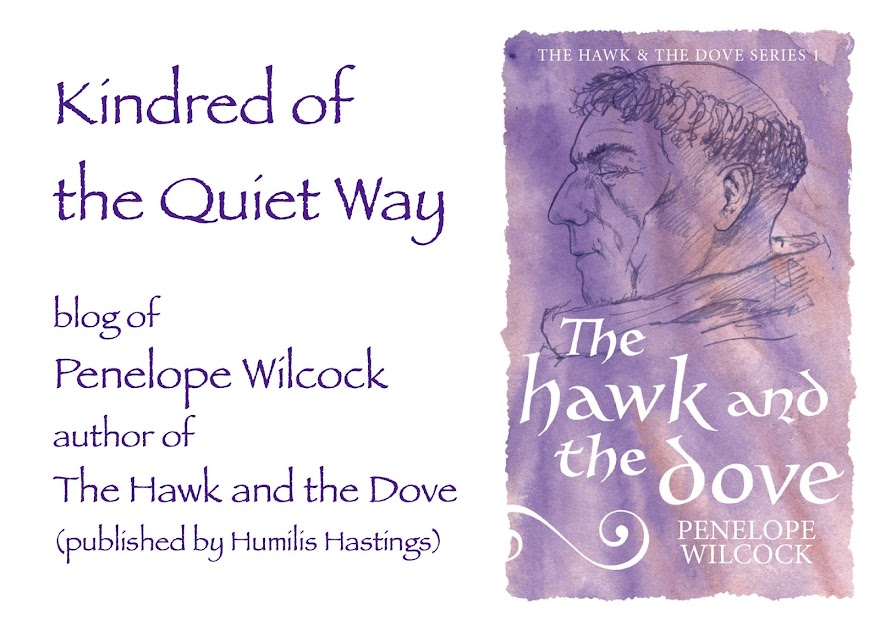
As a child in church, the coloured light coming through the stained glass windows attracted and nourished me. The pictures in the glass I found somewhat of an impediment, distracting from the vitality of the coloured glass and the light.
Stained glass is an amazing art form, absorbing to gaze upon, because the relationship of the artefact and the context is so dynamic.
Alice’s calendar glass stands on the cill of the windows in a curving bay facing north, in a house built on a hillside sloping downwards towards the east. The entering of the light changes dramatically as the year turns. At this point of the year, the light slants strongly into bay from the western side at evening. At all times of the year light floods up from the east as the sun rises.
For privacy (the window looks onto a residential street, from which the house is separated only by a tiny garden) a curtain made from the finest Indian cotton (it’s a pistachio green sari in fact) has been hung in the window.
Some of the glass in the calendar panel is white (clear), some is old, faintly green, window glass. Two of the figures set in the panel (John the Baptist and the Christ Child, for the solstices) are glass sculpts (lost wax technique), the other two – Oestre and Michael, the equinox archetypes – are in pale porcelain clay.
As the day and the year change, the light speaks differently through the glass. When the light fades in the late evening, the glass figures of John the Baptist and the Christ Child become quite dark, and the pale clay figures appear light by comparison. As the light of morning and (at some times of the year) evening come slanting through, the clay figures recede, the light now inhabiting the translucent material of John the Baptist and the Christ Child.
The light green, the folds, and the gauzy texture of the sari window curtain, and the palest green and handblown texture of (some of) the glass panels, also interact dynamically with the light: and in some places the glazing bars of the window create shadow – though where exactly depends on the direction of the light slanting in.
Goodness me. There are so many metaphors in this that I hardly know where to begin.
Stained glass is an amazing art form, absorbing to gaze upon, because the relationship of the artefact and the context is so dynamic.
Alice’s calendar glass stands on the cill of the windows in a curving bay facing north, in a house built on a hillside sloping downwards towards the east. The entering of the light changes dramatically as the year turns. At this point of the year, the light slants strongly into bay from the western side at evening. At all times of the year light floods up from the east as the sun rises.
For privacy (the window looks onto a residential street, from which the house is separated only by a tiny garden) a curtain made from the finest Indian cotton (it’s a pistachio green sari in fact) has been hung in the window.
Some of the glass in the calendar panel is white (clear), some is old, faintly green, window glass. Two of the figures set in the panel (John the Baptist and the Christ Child, for the solstices) are glass sculpts (lost wax technique), the other two – Oestre and Michael, the equinox archetypes – are in pale porcelain clay.
As the day and the year change, the light speaks differently through the glass. When the light fades in the late evening, the glass figures of John the Baptist and the Christ Child become quite dark, and the pale clay figures appear light by comparison. As the light of morning and (at some times of the year) evening come slanting through, the clay figures recede, the light now inhabiting the translucent material of John the Baptist and the Christ Child.
The light green, the folds, and the gauzy texture of the sari window curtain, and the palest green and handblown texture of (some of) the glass panels, also interact dynamically with the light: and in some places the glazing bars of the window create shadow – though where exactly depends on the direction of the light slanting in.
Goodness me. There are so many metaphors in this that I hardly know where to begin.

2 comments:
Hi \ember - lovely photos. It's difficult to capture stained glass even when they're in monochrome. Alice told me she did the woman and Michael the archangel in clay because their archetypes were like the human opposites of male and female, so the clay is like us, more solid, opaque. It is hard to see, but the glass surrounding the baby is grey, and that is the darkness. \the glass surrounding John the Baptist is frosted, because there is more light.
\also, you asked me to say something about the orientation of this house affecting the light. \we face north almost exactly, but just tilted slightly east I think. \that's why our garden at the back has so much sun. \the sun will rise in the east all year, but only exactly in the east at equinoxes, likewise in the west at sunset. It will rise more and more north of east til the summer solstice, and more north west at the set, thus giving us such a long day (I think it is because of our position on the hemisphere that the sun seems to swing south as it rises). \that's why we only get a proper sunrise and sunset in this room at high summer, because later in the year after Michaelmass the sun will rise south of east and set south of west.
Oh my goodness! That is SO beautiful!
Post a Comment